How to Properly Inspect and Maintain Material Handling Equipment
Date Posted:13 November 2024
By implementing structured inspection and maintenance processes, businesses can ensure a safer, more efficient workplace, ultimately saving time and costs associated with equipment failures.
Material handling equipment is crucial in ensuring efficient operations within warehouses, factories, and other industrial settings. Proper inspection and maintenance of this equipment are vital not only for extending its lifespan but also for ensuring workplace safety. Neglecting maintenance can lead to malfunctions, accidents, and costly downtime. This blog outlines essential steps and best practices for inspecting and maintaining material handling equipment effectively.
1. Understanding the Importance of Maintenance
Regular maintenance of material handling equipment is essential for several reasons:
• Safety: Faulty equipment can lead to accidents, injuries, or fatalities. Ensuring that equipment is in good working order protects employees and minimises workplace hazards.
• Operational Efficiency: Well-maintained equipment operates more smoothly and efficiently, reducing the risk of disruptions in workflows.
• Cost Savings: Preventative maintenance helps avoid costly repairs and replacements by identifying issues before they escalate.
According to OSHA, regular maintenance can reduce workplace accidents by up to 50%
2. Types of Material Handling Equipment
Material handling equipment can include various tools and machines, such as:
• Forklifts
• Pallet jacks
• Conveyors
• Cranes
• Trolleys
Each type of equipment has its specific inspection and maintenance needs, which should be understood before diving into the procedures.
3. Establishing a Maintenance Schedule
Creating a structured maintenance schedule is the first step toward effective upkeep. This schedule should include:
• Daily Inspections: Check equipment for visible signs of wear, leaks, or any abnormal conditions before use.
• Weekly Maintenance: Conduct more thorough inspections, including testing controls, checking fluid levels, and inspecting tires or wheels.
• Monthly and Annual Maintenance: These checks may involve more detailed inspections and professional servicing as required by the equipment manufacturer
.
Utilising a checklist can help ensure that all necessary checks are completed consistently.
4. Inspection Procedures
Visual Inspections
Begin with a visual inspection of the equipment. Look for:
• Signs of Wear and Tear: Check for frayed cables, cracked frames, and worn-out tires.
• Fluid Leaks: Inspect hydraulic systems and reservoirs for leaks.
• General Cleanliness: Dirt and debris can hinder performance, so ensure equipment is clean and free from obstructions.
Functional Checks
After visual inspections, perform functional tests:
• Operational Tests: Ensure that all controls function correctly. For forklifts, check lift and tilt mechanisms.
• Load Tests: Test the equipment with a load close to its maximum capacity to ensure it operates correctly under stress
Documentation
Keep detailed records of all inspections and maintenance activities. This documentation can help identify recurring issues and is essential for regulatory compliance.
5. Maintenance Procedures
Routine Maintenance
• Lubrication: Regularly lubricate moving parts to reduce friction and wear.
• Battery Maintenance: For electric equipment, regularly check and maintain battery levels. Ensure that terminals are clean and connections are secure.
• Cleaning: Regularly clean equipment to prevent dirt buildup that can cause wear and tear. This is especially important for moving parts and hydraulic systems.
Repair Procedures
If any issues are identified during inspections:
• Immediate Repairs: Address minor issues before they become major problems. For instance, if you notice a loose bolt, tighten it immediately.
• Professional Servicing: For more significant repairs or complex machinery, hire qualified technicians to perform the necessary work.
6. Employee Training and Awareness
Training employees on proper handling and maintenance procedures is crucial. Conduct regular training sessions to cover:
• Correct Usage: Ensure employees understand how to use equipment properly to prevent misuse and potential damage.
• Reporting Issues: Encourage staff to report any issues or abnormalities immediately. Establish a clear process for this reporting.
7. Compliance with Standards
Ensure that your maintenance practices comply with relevant workplace safety standards and regulations. In Australia, this may involve adhering to guidelines set by Safe Work Australia, which emphasises the importance of maintaining equipment for safety and productivity .
8. Conclusion
Properly inspecting and maintaining material handling equipment is an ongoing commitment that requires attention to detail and adherence to schedules. By implementing structured inspection and maintenance processes, businesses can ensure a safer, more efficient workplace, ultimately saving time and costs associated with equipment failures.
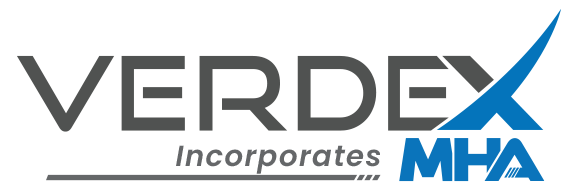
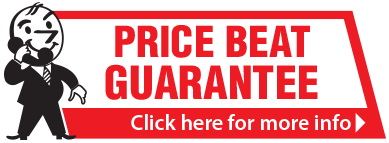






















































































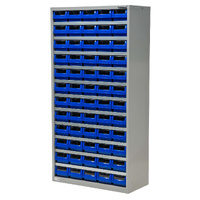








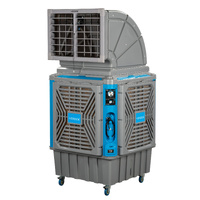
















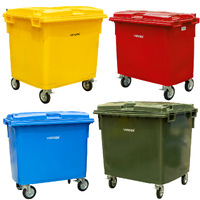







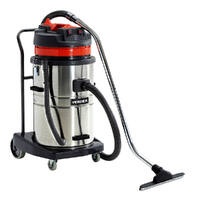





 Trolleys & Hand Trucks
Trolleys & Hand Trucks Cage Trolleys
Cage Trolleys Cleaning Carts & Trolleys
Cleaning Carts & Trolleys Construction Trolleys
Construction Trolleys Custom Trolleys
Custom Trolleys Hand Trucks & Dollies
Hand Trucks & Dollies Laundry/Linen Trolleys
Laundry/Linen Trolleys Lifting Trolleys
Lifting Trolleys Order Picking Trolleys
Order Picking Trolleys Panel Cart Trolleys
Panel Cart Trolleys Platform Trolleys
Platform Trolleys Powered Trolleys
Powered Trolleys Shelf & Tiered Trolleys
Shelf & Tiered Trolleys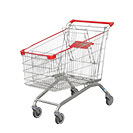 Shopping Trolleys
Shopping Trolleys Stainless Steel Trolleys
Stainless Steel Trolleys Tool Trolleys
Tool Trolleys Utility & Service Carts
Utility & Service Carts Lifting & Handling Equipment
Lifting & Handling Equipment Forklift Attachments
Forklift Attachments Jib Attachments
Jib Attachments Lifting Hoists & Pallet Hooks
Lifting Hoists & Pallet Hooks Load Skates & Tow Tugs
Load Skates & Tow Tugs Manual Stackers & Lifters
Manual Stackers & Lifters Pallet Jacks
Pallet Jacks Pallet Lifters
Pallet Lifters Pallet Rotators & Dispenser
Pallet Rotators & Dispenser Powered Pallet Trucks & Electric Lifters
Powered Pallet Trucks & Electric Lifters Scissor Lift Trolleys and Tables
Scissor Lift Trolleys and Tables Conveyor Equipment
Conveyor Equipment Conveyor Frames & Stands
Conveyor Frames & Stands Roller & Skate Conveyors
Roller & Skate Conveyors Ladders & Access Equipment
Ladders & Access Equipment Container & Yard Ramps
Container & Yard Ramps Ladders & Step Stools
Ladders & Step Stools Work Platforms & Crane Cages
Work Platforms & Crane Cages Drum Handling Equipment
Drum Handling Equipment Drum Storage & Bunding
Drum Storage & Bunding Drum Trolleys & Lifters
Drum Trolleys & Lifters Forklift Drum Handling
Forklift Drum Handling Waste Handling & Bins
Waste Handling & Bins Bin Lifters & Tippers
Bin Lifters & Tippers Plastic Waste & Wheelie Bins
Plastic Waste & Wheelie Bins Steel Waste & Tipping Bins
Steel Waste & Tipping Bins Waste Carts
Waste Carts Dangerous Goods Storage & Spillage
Dangerous Goods Storage & Spillage Aerosol Cans Storage Cages
Aerosol Cans Storage Cages Bunded Pallets & Storage
Bunded Pallets & Storage Corrosive Goods Storage Cabinets
Corrosive Goods Storage Cabinets DG Storage & Trolleys
DG Storage & Trolleys Flammable Liquid Cabinets
Flammable Liquid Cabinets Forklift Gas Storage Cages
Forklift Gas Storage Cages Site Storage
Site Storage Spill Kits
Spill Kits Shelving & Storage Equipment
Shelving & Storage Equipment Stillage & Transport Cages
Stillage & Transport Cages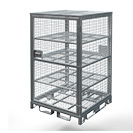 750 Series Cage Configurations
750 Series Cage Configurations Heavy Duty Cabinets
Heavy Duty Cabinets Heavy Duty Shelving
Heavy Duty Shelving Mega Bins & Pallets
Mega Bins & Pallets Packing & Workbenches
Packing & Workbenches Parts Trays & Stor-Pak Bins
Parts Trays & Stor-Pak Bins Pegboard & Louvre Panels
Pegboard & Louvre Panels Plastic Bins & Crates
Plastic Bins & Crates Plastic Handling Solutions Bins
Plastic Handling Solutions Bins Plastic Pallets
Plastic Pallets Stack & Nest Bins
Stack & Nest Bins Pallet Racking Accessories
Pallet Racking Accessories Workplace Equipment
Workplace Equipment Modular Workbenches
Modular Workbenches Electric Height-Adjustable Workbenches
Electric Height-Adjustable Workbenches Floor Matting
Floor Matting General Workplace Equipment
General Workplace Equipment Industrial Weighing Scales
Industrial Weighing Scales Packaging Machinery
Packaging Machinery Stationery Cupboards
Stationery Cupboards Storage and Stillage Cages
Storage and Stillage Cages Tool Trolleys
Tool Trolleys Tooling Cabinets
Tooling Cabinets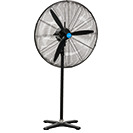 Workshop Fans and Coolers
Workshop Fans and Coolers Safety Barriers, PPE & Signage
Safety Barriers, PPE & Signage Barriers & Bollards
Barriers & Bollards First Aid Equipment
First Aid Equipment Gloves, Knives and PPE
Gloves, Knives and PPE Signage
Signage Cleaning & Site Supplies
Cleaning & Site Supplies Cleaning Equipment
Cleaning Equipment Cleaning Trolleys
Cleaning Trolleys Rubbish Bins
Rubbish Bins Signs & Traffic Supplies
Signs & Traffic Supplies Construction Equipment
Construction Equipment Construction Trolleys
Construction Trolleys Waste Handling
Waste Handling General Site Equipment
General Site Equipment Concrete Equipment
Concrete Equipment Site Storage
Site Storage Lifting Equipment
Lifting Equipment Verdex Specials
Verdex Specials









